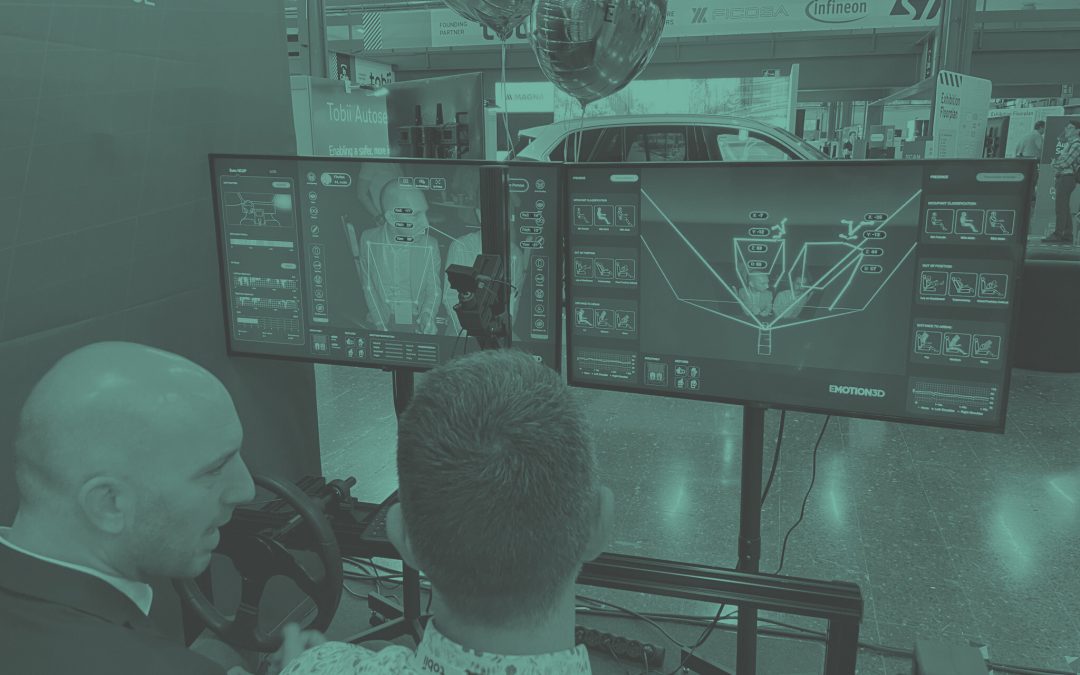This month, our team participated in InCabin Europe in Barcelona, an event we look forward to each year. It provides the perfect platform to showcase our latest advancements to existing and new clients while staying informed on the latest trends and technologies in the in-cabin industry. This year, we had some exciting innovations to share, particularly in the realm of passive safety, which has become a recent focus of the industry.
Our exhibit included our DOMS (Driver Occupant Monitoring System) demo with a 1-megapixel 140° Field of View (FoV) Near Infrared (NIR) camera. This setup, amongst active safety and user experience features, also included a range of passive safety capabilities like seatbelt detection, multiple “out of position” scenarios, and occupant classification. We’re happy to have received positive feedback for our eye gaze tracking and 3D body pose estimation at such a low resolution. Additionally, our new “out of position” features—submarining, distance-to-airbag, and detection of feet on the dashboard— developed based on high risk situational factors in vehicle crashes, carry the potential of fulfilling upcoming passive safety protocols.
A Strong Focus on Adaptive Restraints in the Industry
Throughout the demos and discussions at InCabin Europe, adaptive restraints emerged as a significant theme. This trend reflects an industry-wide shift toward in-cabin analysis features assisting passive safety systems. It is expected that passive safety will be the next big topic for regulations after active safety which came into effect with the General Safety Regulation in Europe this past July. As an effect of this, active safety systems have advanced significantly. The focus is now on the improvement of passive safety systems to better protect occupants in case of an unavoidable crash.
Our Technical Project Manager, Fabian Windbacher, delivered an insightful talk titled “SOP 2026 and Beyond: Adaptive Restraints as the New Frontier in Automotive Safety”. His presentation covered the evolution of passive safety, emphasizing the critical role of seatbelts and airbags in adapting to the situational factors as well as diverse physiological factors of occupants. Fabian’s insights shed light on the future of passive safety systems and how our innovations align with these evolving demands.
Looking Ahead
As we look forward to the next InCabin event, we are excited to continue sharing our knowledge and learning from the industry. Our mission is clear: to develop cutting-edge solutions that prioritize equitable safety for all vehicle occupants. Stay tuned for more updates as we continue pushing the boundaries of automotive safety to meet the needs of all occupants.

